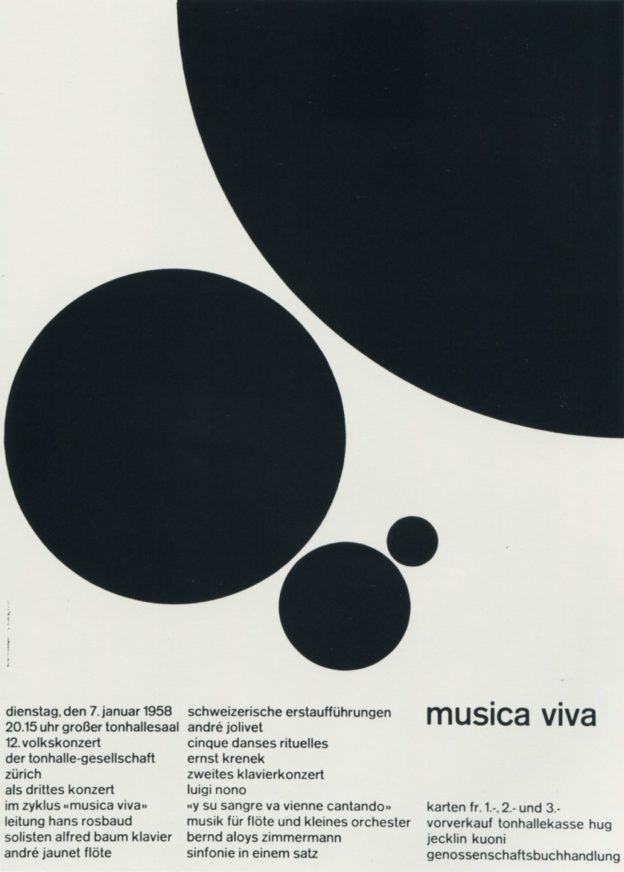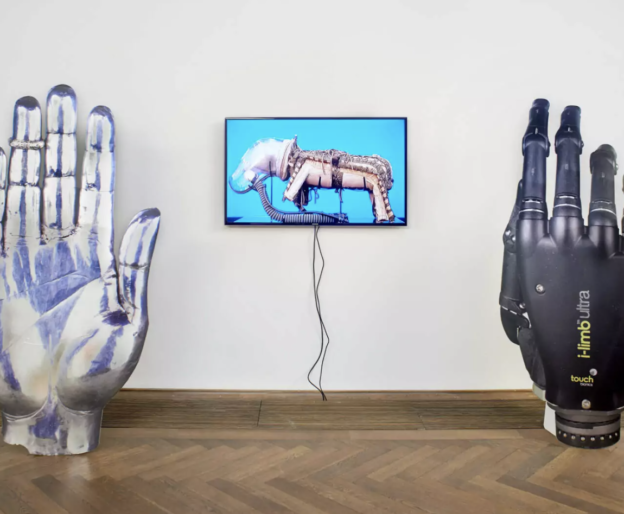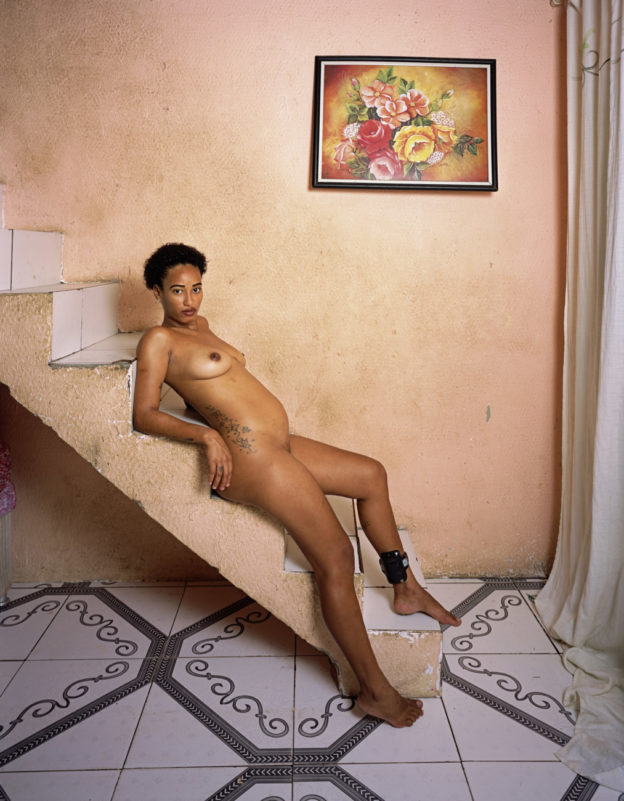
Order was always wishful thinking for me. For sixty years I have produced disorder in files, correspondence, and books. In my work, however, I have always aspired to a distinct arrangement of typographic and pictorial elements, the clear identification of priorities. The formal organization of the surface by means of the grid, a knowledge of the rules that govern legibility—line length, word and letter spacing, and so on—and the meaningful use of color are among the tools a designer must master in order to complete his or her task in a rational and economic matter. — Josef Müller-Brockmann
THE SWISS GRID—an exhibition that “explores the development and impact of the International Typographic Style”—is now in its final weeks at Poster House.*
See link below for details.


Through February 14.
Poster House
119 West 23rd Street, New York City.


The Swiss Grid, Poster House, New York, February 27, 2020–February 14, 2021, from top: Josef Müller-Brockmann, Musica Viva, 1958, Tonhalle-Gesellschaft, Zürich; Armin Hofmann, Junge Holländische Bildhauer, 1960, Kunsthalle Basel; Robert Büchler, Typographie, 1962, Gewerbemuseum Basel, unmodified and modified; Richard Paul Lohse, Ausstellung Musikinstrumente, 1962, Kunstgewerbemuseum, Zürich; Armin Hofmann, Stadt Theater Basel, circa 1963–1967; Emil Ruder, Berlin, 1963, Gewerbemuseum Basel; Armin Hofmann, Giselle, 1959, Basler Freilichtspiele. Images courtesy and © the artists, their estates, and Poster House.



















